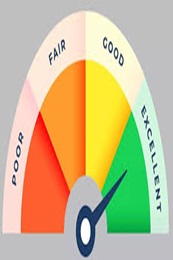Dormant Account: Meaning and Activation Process Explained
April 15, 2025

According to a recent report by the Reserve Bank of India (RBI), there are over 10 crore dormant accounts in the country, holding nearly ₹35,000 crore in unclaimed deposits. Dormant accounts, often overlooked by account holders, can become a significant concern, not just for individuals but also for financial institutions.
A dormant account is one where there hasn’t been any activity for an extended period, typically 24 months and beyond. While it might seem like a minor inconvenience, a dormant account can lead to restricted access to funds, missed opportunities for financial growth, and even risks of fraud.
In this blog, we’ll delve into everything you need to know about dormant accounts, including how they’re classified, steps to reactivate them, and tips to avoid your account becoming dormant in the future. Let’s ensure your hard-earned money never sleeps!
What is a Dormant Account?
As per RBI’s (Reserve Bank of India’s) classification, a Savings or Current Account can be deemed dormant if there are no customer-induced transactions for a period of 24 months (or for such other period as may be decided by the Bank subject to the directives of RBI). In such cases, the bank, at its sole discretion, deny any or all services and/or transactions.
What Falls Under Customer-Initiated Transactions?
The following activities are classified as customer-induced or initiated transactions:
- Transactions through cheque
- Cash or cheque deposit
- Withdrawal or deposit through ATM
- Transaction through Net Banking
- Transaction by standing instruction, ECS, and EFT
- Credit of interest from fixed deposit to Savings Deposit
- Execution of standing instructions (debits or credits) in Savings Deposit
How to Make a Dormant Account Active
To reactivate a dormant account, you can take the following steps:
Step 1: Visit the Bank Branch
Visit the branch of the bank where the account is maintained. You can locate bank branches here.
Step 2: Submit a Written Request
Provide a written request to the bank for reactivating the dormant account. You need to fill out this form.
Step 3: Complete KYC Requirements
You would need to complete any required Know Your Customer (KYC) formalities, which could include submitting updated identification and address proof documents.
Step 4: Perform a Transaction:
Conduct a transaction in the account, such as a deposit or withdrawal, to demonstrate activity.
By following these steps, the customer can request the bank to reactivate the dormant account and resume normal operations.
Is a Dormant Account Same as Inactive Account?
No, a dormant account is not the same as an inactive account. A bank account is classified as “inactive” if no transactions are carried out for 12 months or 1 years. However, unlike a dormant account, an inactive account can be reversed to an active bank account just by performing a transaction. Please refer to the table below to understand the differences:
| Parameters | Dormant Account | Inactive Account |
| Period of Inactivity | If the inactivity extends beyond 24 months (or 2 years), the account is classified as dormant. | A bank account is considered inactive if there has been no customer-initiated transaction (deposit, withdrawal, or transfer) for 12 months |
| Restrictions | Once classified as dormant, the account may face certain restrictions, such as limited access to online banking, ATM withdrawals, or other services, until the account is reactivated. | Generally, no restrictions are placed on these accounts, but banks may send reminders to encourage activity |
| Purpose of Classification | Dormant classification is aimed at preventing fraud or unauthorized use of long-neglected accounts | Banks track inactive accounts as a preliminary measure to monitor customer engagement |
| Reactivation Process | Reactivation requires additional steps , such as submitting a service request form, completion of KYC, etc | Simply making a transaction—like a deposit, withdrawal, or cheque clearance—can bring it back to normal status |
Final Thoughts
Don’t let your Savings Account sit idle. Open a Recurring Deposit Account and link it to your Savings Account, and see your money grow. Meet your short and long-term goals efficiently with your Savings Account.
FAQs
1. What is a dormant bank account?
A dormant bank account is one that has not been used for any customer-initiated transactions (like withdrawals, deposits, or transfers) for a continuous period of 24 months.
2. How is a dormant account different from an inactive account?
An account is classified as inactive after 12 months of no activity. If there is no activity for another 12 months (a total of 24 months), the account becomes dormant.
3. What transactions are considered to keep an account active?
Transactions like cash deposits, ATM withdrawals, fund transfers, cheque clearances, and payments using internet banking are considered activity. Auto-debits or interest credit from the bank do not count.
4. Can I withdraw money from a dormant account?
No, withdrawals and other services like internet banking or ATM usage are restricted for dormant accounts. You’ll need to reactivate the account first.
5. How can I reactivate my dormant account?
To reactivate a dormant account, visit your bank branch with updated KYC documents (such as ID proof and address proof) and submit a written application along with a duly filled service request form for reactivation. A small transaction may also be required.
6. Is there a penalty for having a dormant account?
Banks generally do not impose penalties for having a dormant account, but some may charge fees for maintaining it. Check with your bank for details.
7. Can a dormant account be closed?
Yes, you can close a dormant account. Visit the bank branch, provide KYC documents, and submit a request for account closure.
8. What happens if a dormant account is not reactivated?
If a dormant account is not reactivated, it continues to remain dormant. In some cases, after many years, the unclaimed funds may be transferred to the Depositor Education and Awareness Fund (DEAF) as per RBI guidelines.
9. How can I prevent my account from becoming dormant?
To avoid your account becoming dormant, ensure you make at least one customer-initiated transaction (deposit, withdrawal, or transfer) every 12 months. Regular monitoring and occasional usage can prevent dormancy.
Latest Blogs

Telangana Housing Board & KPHB Colony: A Guide to Affordable Urban Housing in Hyderabad
March 14, 2025
As Telangana continues its rapid urbanisation journey, two key housing entities—Telangana Housing Board (THB) and Kukatpally Housing Board Colony (KPHB)—have played critical roles in shaping the state's real estate ecosystem.

Does Checking CIBIL Score Frequently Lower Your Credit Points?
April 07, 2025
Imagine you're planning to apply for a home loan, a credit card, or even a car loan. Naturally, you want to ensure your CIBIL score is in good shape before proceeding.

Explained: Can NRIs Buy an Agricultural Land in India?
April 03, 2025
Real estate investment is often a top priority for Non-Resident Indians (NRIs) looking to retain strong financial ties to India.

How to Improve Your CIBIL Score from 600 to 750: A Step-by-Step Guide
April 02, 2025
Your CIBIL score is like your financial reputation—banks check it before approving loans or credit cards. If your score is hovering around 600, you might face difficulties in securing credit or may get loans with higher interest rates.

What Happens When You Leave Your Savings Account Unused?
April 01, 2025
Imagine waking up one day to find that your hard-earned money is locked away and inaccessible. Sounds stressful, right? This is precisely what happens when you leave your Savings Account inactive for too long.




